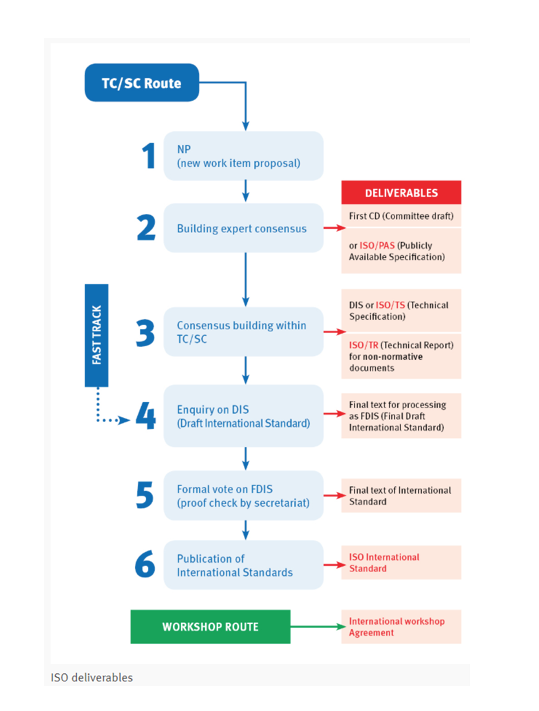What do you get when you cross a print periodical and a webpage? Answer: confusion! At least that was the result by 2000 after online journals had reached a critical mass. Titles were difficult to pick out from the jumble of fonts and text; typical periodical information about frequency, place of publication, and publisher was either non-existent or buried somewhere; links for the journal went to a publisher’s home page rather than directly to the journal; and ISSN were missing or incorrect! Chaos -- or near chaos -- reigned and librarians were not happy. Serials librarians were crying for help. NISO and NFAIS held a joint “Workshop on Electronic Journal Best Practices” during which Regina Romano Reynolds ended her presentation with the question, “Time for a Presentation Standard? (or best practices guidelines?). There already existed a standard covering presentation of print periodicals, ISO 8: 1977. “It’s too soon,” some in the community replied, “we don’t want to stifle innovation.”
Fast forward to Spring 2009 by which time a great deal of innovation had occurred. The concerns of librarians had grown louder as researchers were failing to find articles for which libraries were paying. A call to action in NISO’s Information Standards Quarterly was issued by Cindy Hepfer and Regina Romano Reynolds. Their article, “In Search of Best Practices for E-Journals” ultimately resulted in the publication in 2013 of NISO’s PIE-J, Recommended Practice for the Presentation and Identification of E-Journals (NISO RP-16-2013). Progress!
Fast forward again to 2019. What do you get when you cross ISO 8: 1977 Presentation of Periodicals with NISO RP-16-2013 PIE-J? Answer: ISO 8:2019: Presentation and Identification of Periodicals. Finally, an ISO standard that addresses the presentation — and identification — of both print and e-journals as well as other periodicals. Finally, a standard for librarians, publishers, editors, indexers, aggregators, and others who deal with journals, magazines, and newsletters, whether print, digital or both, that sets out recommendations to bring some order to the chaotic world of periodicals, especially those published online. While no standard can ever completely anticipate all the variations and permutations of these ever-changing entities, this standard provides detailed guidance about titles, basic publication information, ISSN, digitization, and many other topics. Following is a closer look at the standard and its evolution from a problem in search of a solution, to a call to action, and finally to a newly re-born standard.
Periodicals are ever changing entities, often changing titles, publishers, and content focus through their lifetimes — lifetimes which in some cases have been ongoing for over 350 years. “Periodicals, whatever their medium, play a critical role in the information society, and more specifically in the global information infrastructure. Citations to articles in scholarly journals, whether in print or in electronic journals, form the basis for much scholarly research. Popular trade magazines as well as newsletters are used by authors, researchers, and students of all ages. Search, discovery, and use of the wide range of today’s periodicals require that they provide reliable identification and display of key information by following standardized principles and procedures.” These sentences introduce the revised version of ISO 8, published in April 2019. The table of contents for the revised standard includes sections covering identification of periodicals (including ISSN); periodical title information (including title variants, title changes and title history, mergers, and divisions of titles); enumeration and chronology systems (including dates or time periods, supplements, special issues and indexes, and changes of frequency); information about the periodical; layout and pagination; presentation of articles; accessing content; citations; accessibility; and retrospective digitization. The standard has two annexes: title identification and linking (including more detailed information about ISSN); and metadata standards.
Originally published as an ISO Standard in 1977, this second edition of “Information and documentation – Presentation and identification of periodicals” was necessary to incorporate digital publishing requirements into a standard that was only print based at its inception (as well as during its period as an ISO Recommendation, ISO/R 8-1954). The working group responsible for the revision, led by Laurie Kaplan as the Convenor, purposefully incorporated elements of NISO RP-16-2013, Recommended Practices for the Presentation and Identification of E-Journals. Commonly known as PIE-J, the recommended practice was published in March of 2013 after 3 years of development, and through the ongoing Standing Committee has been informing publishers and librarians about the guidelines ever since. During the drafting phase of the PIE-J RP, Nettie Lagace, Associate Director for Programs at NISO, suggested to ISO’s TC 46 technical committee leadership at their 2011 Plenary meeting that ISO 8 should be revised with PIE-J as an informing document.
The path from that 2011 discussion to the final publication of the revised ISO 8 standard in April 2019 was a circuitous route through the six stages for ISO Standard creation. While various constituents of TC46 started discussing the revision process after that 2011 meeting, the resolution to create a New Work Item Proposal was presented in June 2014, and the NWIP was filed in June 2015, also at a TC 46 Plenary meeting (Stage 1-Proposal). From that point, the process followed the Preparatory stage (approval to progress in October 2015, appointment of Laurie Kaplan as the convenor in February 2016 with the revision as a 36-month tracked project, initial contact of the working group on March 31, 2016) to publication 3 years later, on April 1, 2019. In between there were actions in the Committee, Enquiry and Approval stages, with the working group creating a committee draft and then a DIS, or Draft International Standard. Both were approved, and the working group responded to comments from the voting members of ISO. An FDIS, or Final Draft International Standard, was created and approved, and moved to the Publication stage. Most meetings happened virtually with experts from several countries participating and contributing to the final standard.
Active on both the PIE-J committee and the ISO 8 revision working group, Laurie Kaplan and Regina Romano Reynolds collaborate here to highlight the most salient points of ISO 8 for the NISO IO audience. The “crossing” of the ISO 8 Standard and the NISO PIE-J RP enhances the guidance of PIE-J by presenting similar information in a standard for the benefit of all stakeholders of the periodical supply chain, including publishers, content providers, authors, librarians, and researchers. ISO 8 “establishes the minimum characteristics required for the presentation and identification of periodicals including not only the obvious traditional elements that print periodicals typically display (e.g., title, ISSN, publisher, and date), but also the ‘footprints’ of periodicals published on digital dynamic media that enable them to be traced along the path of their history, such as changes of URL and publisher or content provider. Furthermore, this document provides information about persistent identifiers, using ISSN, and citation of periodicals (especially when published online or digitized and when titles have changed). It also makes specific recommendations for presentation and identification aspects of retrospective digitization of periodicals.” As stated in the Scope section of ISO 8, the standard is applicable to periodicals as a subcategory of continuing resources. It does not apply to newspapers, book series, loose-leaf services, databases, or online reference works.
While PIE-J focuses only on electronic journals, ISO 8 retains information about the presentation of print periodicals while also addressing born digital and retrospectively digitized content. Both documents present information designed to enhance the discovery, citation, and access to periodical information over time. Key sections in these documents include title information (title variants, title changes, title history, etc.), enumeration and chronology, layout and pagination, finding aids, citation, accessibility, and retrospective digitization. There is a strong emphasis on the importance of the ISSN as an identifier of periodicals, with reference to ISO-3297, Information and documentation — international standard serial number (ISSN), currently under revision.
With a global perspective on scholarly research, it is important that the PIE-J and ISO 8 recommendations are relevant for periodical producers and consumers worldwide. The PIE-J recommended practice began with this goal: “to review the problem and develop a Recommended Practice that will provide much-needed guidance on the presentation of e-journals — particularly in the areas of title presentation, accurate use of the ISSN, and citation practices — to publishers and platform providers as well as to solve some long-standing concerns of serials librarians. One of those concerns stated in the Work Item Proposal for PIE-J was ‘[u]nless journal websites accurately and uniformly list all the titles under which content was published, user access to desired content is considerably diminished.’ No one wins: not the library, the publishers, the vendor, or the researcher.” The ISO 8 working group wholeheartedly agreed with that sentiment, and therefore incorporated many of the PIE-J statements into the revised standard.
The PIE-J committee, both the original committee and the standing committee, include representatives from several publishing companies, university libraries, and US national libraries. The ISO 8 working group had members from 12 National Standards Bodies across the world including AENOR, AFNOR, ANSI, BSI, DIN, DS, GOST R, NBN, NQIS ELOT, SAC, SCC, UNI (representing Spain, France, US, UK, Germany, Denmark, Russian Federation, Belgium, Greece, China, Canada, and Italy). There were four stakeholder categories represented: Academic and Research Bodies, Government, Industry and Commerce, and Non-governmental Organizations (NGOs). This breadth of experience within the working group enhanced the discussions and led to a comprehensive document.
Given the long history of an unchanged ISO 8 (ISO standards are reviewed for retention, change, or withdrawal every 5 years) what sparked this revision? If we look at print periodicals over the centuries, it is apparent that the “format and arrangement” has been static for a very long time. A print issue of Le Journal des Scavans, which began in 1665 and is considered the earliest “modern” academic journal, is quite recognizable as a journal and seems very much apiece with contemporary print academic journals due to its format and arrangement. What made revision of ISO 8 essential is the development and explosive growth of e-journals and other periodicals in digital form, and the ever-growing importance of the ISSN. E-journals, for example, can be presented in a bewildering variety of ways and their presentations can change at the whim of the publisher or designer. Guidance for publishers and platform providers on both presentation and identification of these publications is essential for researchers, reference librarians, serials catalogers, database providers, and others to interact effectively with online periodicals and the information contained in them. PIE-J, as a recommended practice, lacks the force of a standard, and ISO 8 lacked critical information for today’s environment. We are in hopes that their “cross” will provide the hybrid vigor that characterizes the most successful crosses and promote the growth and development of a new breed of periodicals that have been influenced by this revitalized standard.
References:
Hepfer, C. and Romano Reynolds, R. (2009, Spring). In Search of Best Practices for Presentation of E-Journals. ISQ Information Standards Quarterly. Retrieved from https://groups.niso.org/apps/group_public/download.php/18715/FE_E-Journals_Presentation_isqv21no2.pdf
International Organization for Standardization. (1977). Documentation -- Presentation of periodicals (ISO 8:1977 Standard No. 3585). Retrieved from https://www.iso.org/standard/3585.html
International Organization for Standardization. (2019). Information and documentation -- Presentation and identification of periodicals (ISO 8:2019 Standard No. 67723). Retrieved from https://www.iso.org/standard/67723.html
National Information Standards Organization (2013). PIE-J: The Presentation & Identification of E-Journals (NISO RP-16-2013). Retrieved from https://www.niso.org/publications/rp-16-2013-pie-j
Wesley, K. (2013, March). Regina Romano Reynolds. Retrieved from https://tigerprints.clemson.edu/cgi/viewcontent.cgi?referer=https://www.google.com/&httpsredir=1&article=1470&context=nasig


